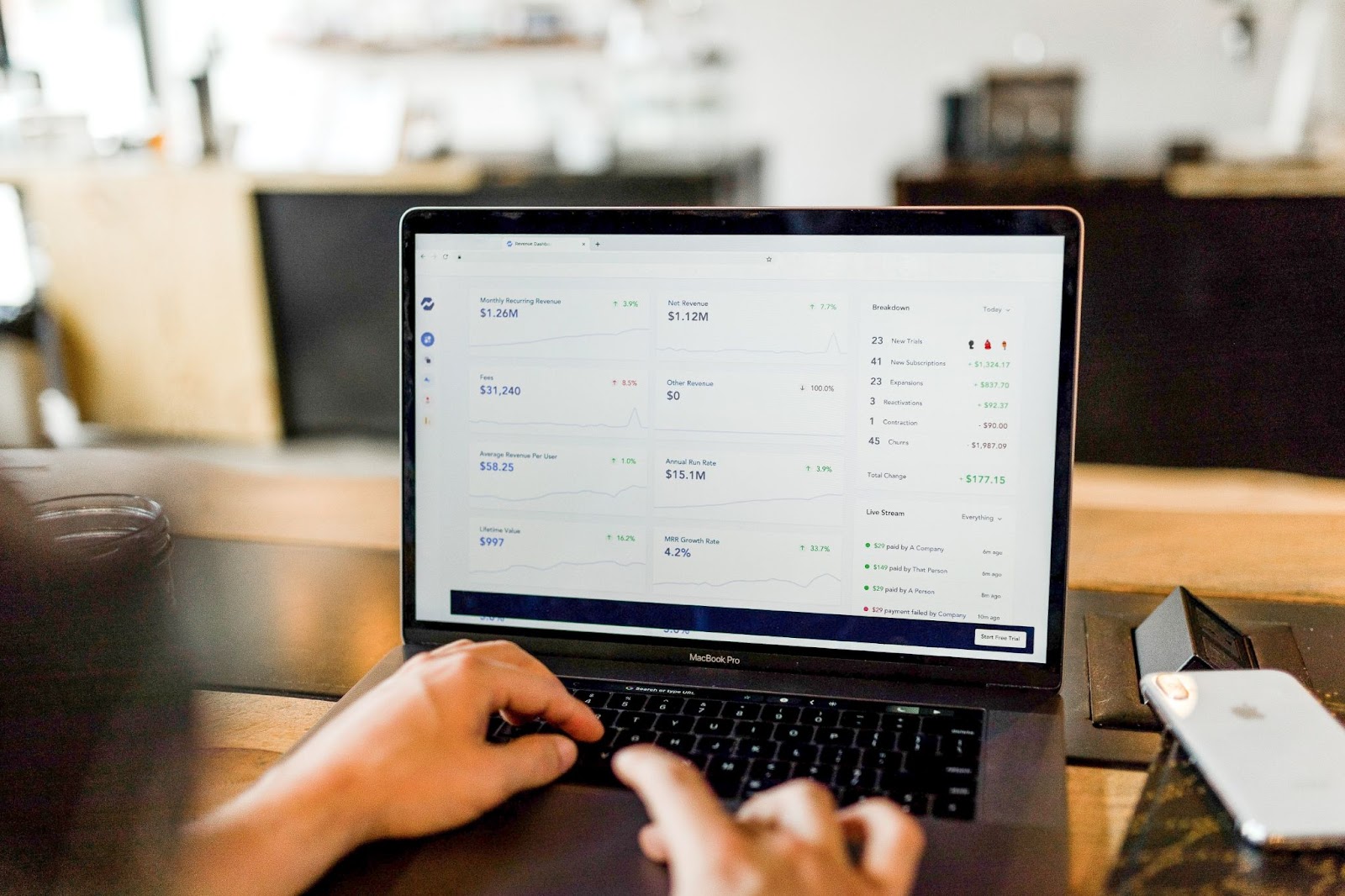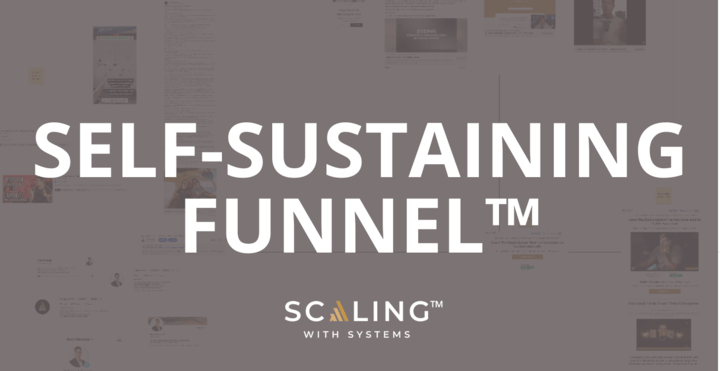Many successful businesses know the value of spending money on ads.
When it comes to the best way to maximize your ad spend, there’s no one-size-fits-all approach. This is why it’s important to understand what metrics to look at and how to think about spending money on ads in a way that works for your unique situation.
Brian Moncada of Adspend.com is an expert in this field and has been helping businesses optimize their ad spend since 2009. He recently shared his insights with the founder of Scaling With Systems, Ravi Abuvala. The two discussed how to spend money on ads in a smart way.
Brian covered everything from how much you should spend on advertising to the importance of understanding your target audience. He also shared his experience of spending $2,000,000 monthly on ads and how he optimized ads to get the best results.
Brian’s advice is invaluable for businesses looking to maximize their ad spend. How much should you spend on ads? Let’s take a detailed look at marketing and advertising in this article with some tips from Brian.
Spending Money On Ads: An Overview
Ads can reach new customers, increase brand awareness, and drive sales. This can be done through various channels, such as television, radio, and print. Businesses can also utilize online platforms like Google, Facebook, and YouTube.
Advertisers can target specific demographics, geographic areas, and interests, which can help increase the effectiveness of the ad campaign. Understanding how much to spend on advertising to get the best results is key.
Why Spend Money On Advertising
Advertising, when done correctly, can drive traffic to your website or social media accounts and help increase sales. The strategic execution of ads can be one of the most successful marketing tactics for a business. This is especially important for new businesses or those expanding into new markets.
Benefits Of Spending Money On Ads
There are many benefits to spending money on ads, including:
- Increased brand awareness: Reach new customers.
- Improved customer engagement: Engage with existing customers and build relationships with potential customers.
- Increased website traffic: A curated ad campaign can drive more traffic to a business’s website.
- Cost-effective: Advertising can be a cost-effective way to reach a large number of people.
Spending money on ads leads to huge payoffs in your business. But how much should you spend on ads to really make a difference? Learn from Brian Moncada’s experience as he shares valuable tips for how to work out the right amount to spend on ads.
Brian Moncada (Adspend.com): Things To Learn
Brian recommends learning about five key areas: research, targeting, optimization, budgeting, and tracking.
Research
You need to know who your target audience is and what they respond to. This involves researching markets and trends. You also need to analyze competitors to get a better idea of how people are interacting with similar products or services.
Targeting
Targeting follows research. It requires understanding the various tools available to focus on specific audiences.
Optimization
Once you have a good understanding of who you’re targeting and which ad platforms reach them, optimization comes next. This involves testing different creative approaches, from text-only ads to multi-media campaigns.
Budgeting
Budgeting helps to avoid wasting resources on ineffective campaigns or incorrect ad platform choices. Once again, testing should be used here as well. To help manage budget decisions effectively, Brian suggests having a reliable tracking system in place.
This is so that data can be analyzed accurately and easily across campaigns or platforms over time.
Tracking
The last piece of a successful advertising program is effective tracking. This isn’t just about measuring clicks but having an ongoing process. The process should allow businesses to track user behavior from initial exposure through conversion (or lack thereof).
This helps ensure an accurate assessment of success or failure at each stage along the customer journey. It also identifies areas where improvements maximize ROI over time.
How Much Should You Spend On Advertising? Defining Profit
Identify the overall goal of the campaign. Is it to increase brand awareness? Generate more leads? Increase sales and revenue? Once the goal is identified, you can start to measure success using metrics like cost per lead (CPL), cost per acquisition (CPA), and return on investment (ROI).
ROI is a ratio that compares the amount of money earned from a campaign to the amount spent on it. It can be calculated by dividing the profit (or revenue) from the campaign by the total cost of the campaign. You then multiply by 100 to get a percentage.
For example, if a business spends $1000 on an advertising campaign and earns $2000 in revenue, the ROI would be 100% ($2000/$1000 = 2 x 100%). This means that the business made a profit of 100%.
Another way to define profit is by measuring the Lifetime Value (LTV) of a customer. LTV is the total amount of money a customer will spend on a business’s products or services over the course of their lifetime. By measuring LTV, businesses can determine how much they can afford to spend on acquiring a new customer.
Depending on the business, other metrics, such as the number of leads generated, brand awareness, and website traffic, can also be used to evaluate the success of an advertising campaign.
It’s also possible to divide profits into two categories; short-term profits and long-term profits. Short-term profits can refer to immediate financial gains made from running an ad campaign, while long-term profits are usually measured in terms of customer satisfaction, brand recognition, and loyalty.

Tracking Ad Profits
When asking, “how much should I spend on advertising”, you need to be able to track the profits made by ads to get a number that is rooted in facts. There are several ways to track the profit from an advertising campaign. You can look at:
Conversion tracking: see when a customer completes a desired action, (making a purchase or filling out a contact form). Set up conversion tracking on a website or landing page to see how many conversions were generated.
Google Analytics: Set goals and track conversions in Google Analytics to see how many conversions were generated from the advertising campaign, as well as other helpful metrics.
Sales tracking: Track the number of sales generated from a campaign. You would set up a special tracking code.
Return on Investment (ROI): ROI is a ratio that compares the amount of money earned from a campaign to the amount spent on it. Businesses can see how much profit they made from the advertising campaign.
A/B testing: This is a way to test different versions of an ad or landing page to see which performs better. Businesses can optimize their ads and landing pages.
Cost per Acquisition (CPA): Measures the cost of acquiring a new customer. Businesses can assess how much they spend to acquire a new customer.
Businesses need to track multiple metrics to get a complete picture of the campaign’s performance.
Tiered Or Flat Profit?
Tiered structures involve charging a higher rate for each click or impression that is generated. Flat profit structures involve charging a fixed rate regardless of the number of clicks or impressions generated.
Deciding which type of structure works best will depend largely on the goals and budget of the business in question. For those looking for maximum control over their advertising efforts and return on investment, tiered structures may be the best option.
A flat profit model may be more appropriate for those with fewer resources who are looking for a simpler solution. Ultimately, the best structure will depend on the specific business and its advertising goals.
Reasons For Spending Money On Ads
Boosts Business In The Long Run
Advertising can also help a business establish a strong online presence and effectively compete with larger companies. Advertising also provides valuable data on customer behavior. Understanding how people interact with your content and what they are responding to really helps businesses to know how to improve products and services.
Investing in advertising can be a key component of a long-term strategy for business growth and success.
Grow Brand Recognition
Ads can be used not only to share about a product/service. Great ads also promote the company’s values and mission. This can help to establish a positive reputation and give potential customers a feel that they know what the business stands for. Having that personal connection to the business is key for these prospects deciding to make a purchase.
By being associated with a company that supports a good cause, consumers are more likely to favor it over competitors. Brands that are advertising regularly build a strong online presence. This helps improve search engine rankings and increase website traffic.
By advertising, businesses establish a reputation as reliable sources of information. This can help to attract new customers and establish a loyal customer base, which can lead to long-term growth and success.
How Does Adspend Help Their Customers?
Starting From Scratch
Brian: “We start with an audit of the various ads they have running at the time to assess effectiveness. If something is working, we build on that. Doing this audit allows us to understand the history of their ad campaigns and design a way forward.”
Already Running Successful Ads?
If a client is already running a successful campaign, Adspend provides customer tracking and analytics services to review them. Adspend then gives business owners real-time insights into their performance on different channels.
With this data in hand, businesses can optimize their campaigns for maximum ROI, as well as tweak existing strategies to make sure they are targeting the right demographics.

Spending Money On Ads: Types Of Ads To Run
Custom Intent
Custom Intent ads are a powerful way to target users who are already engaged with your brand or product. These ads use Google’s advanced machine-learning technology.
By focusing on those users specifically instead of casting a wider net, you’ll get more bang for your buck. Those users are already engaged with the product or service in some way.
Custom Intent Ads also allow for enhanced tracking capabilities across all stages of the customer journey, from discovery to conversion.
Examples of Custom Intent ad types:
- Search ads: You find these at the top of search engine results pages when users search for keywords related to the business’s products or services.
- Display ads: These can be found on websites across the internet, often in banner ads or other visual formats.
- Video ads: They appear on video platforms such as YouTube and Vimeo.
- Social media ads: These show up on social media platforms such as Facebook, Instagram, Twitter, and LinkedIn.
Custom Affinity
The people reached by customer affinity ads are likely to be interested in the business’s offers.
How custom affinity targeting works:
It leverages user data from a variety of sources, like demographics, search history, past purchases, and more. This data is used to identify users who share similar characteristics.
These characteristics make them likely to be interested in a particular offer. With this data, advertisers can better understand the type of audience they’re trying to reach and craft messages tailored to appeal to them.
Examples of Custom Affinity ad types:
Sponsored content: Sponsored articles, blog posts, or social media posts that provide information about the business’s offers.
Influencer marketing: Partnering with influencers with a large following of people who have demonstrated an affinity for your industry.
Native Advertising: These ads are designed to blend in with the surrounding content, making them less intrusive.
Conversion Rates
Ads conversion rates are important metrics for ad campaigns.
Understanding how effective your campaigns are at converting these viewers into paying customers can help you further optimize the ads to get the outcome you’re looking for – i.e. closing the deal!
Conversion rates are calculated by:
> dividing the number of people who complete a desired action by the total site visitors.
The desired action could be email sign-ups, lead magnet download, or even simply a purchase.
When you know what percentage of visitors actually take the desired action after seeing your advertisement, you can tell whether the ad is effective. Higher conversion rates usually mean more successful lead-generation strategies and better ROI from paid advertising campaigns.
Say you had 1,000 website visitors with 100 signups for an email newsletter, your conversion rate would be 10%.
Layering Segments For Audience
Layering segments for audience targeting helps you to create more targeted ad campaigns. This is done by combining different segments of an audience (e.g. demographics, interests, behaviors, and location).
A business that sells outdoor gear may want to target people who are interested in hiking, camping, and backpacking. They might want to target people aged 25–35, living in a specific location.
By layering these segments together, the business can create a highly targeted ad campaign. This is more likely to reach and convert potential customers.
It can also help reduce ad spend by avoiding targeting people who are not likely to be interested in your offer.
Layering segments for audience targeting can be done using Google Ads, Facebook Ads, and LinkedIn Ads. These platforms offer various targeting options to create more specific audiences.
#1 Thing Outside Of Ads – Leverage Points
Leverage points outside of just your ads are areas that might relate to the sales process, but aren’t directly about creating ads. Rather, they’re more like points along the journey that your prospective customers reach. Say they book a discovery call based on an ad, and then interact with your sales team. The sales team is a leverage point. Let’s look at more leverage points in more detail.
Sales Team
A sales team can help build relationships with potential customers and close deals. They can also help to increase revenue by upselling or cross-selling to existing customers. This can be done by offering complementary products or services or by offering discounts for multiple purchases.
Sales Process
A well-defined sales process is another important aspect outside of advertising that can help to drive conversions and business growth. A sales process is a series of steps that a sales team follows to move a potential customer through the sales funnel, from lead generation to close.
Making personal contact with potential clients through phone calls or emails can help create a deeper level of trust than an ad campaign alone could ever provide.
Sales Manager
A skilled sales manager can be a key leverage point outside of advertising that can help drive conversions and business growth. A sales manager is responsible for leading, managing, and mentoring the sales team. This person plays a crucial role in driving sales and revenue for the business.
By investing in a skilled sales manager, you can increase ad conversions and drive business growth.
Marketing & Sales Friction
As a business, it’s important to identify and reduce any marketing or sales friction. This could be preventing your customers from engaging with your product. Analyzing customer feedback and using data-driven insights can help you determine which points need improvement. This information can help create better ads and sales experiences for your customers.
FAQs: How Much To Spend On Advertising
Why should I spend money on marketing?
You’ll reach a larger audience, build brand recogniti0on and ultimately, convert prospective customers when you spend money on ads. With the right planning for ads, you’ll grow your business and reach a bigger bottom line. This article covers all the benefits of spending money on ads.
What is an ad spend?
An ad spend is the amount of money that a company allocates to advertising and marketing activities. This includes all costs associated with creating and distributing ads.
Is it worth it to spend money on advertising?
When it comes to whether it’s actually worth it to be spending money on ads, the answer is a resounding yes.
How much should I spend on advertising?
There’s no one-size-fits-all answer to this, as it depends on what you are advertising and the potential ROI you can get from converting leads to customers. The most obvious answer is – to spend enough to move the needle but not so much that you don’t make a profit (or only make a small profit). To work on just how much is right for your business when spending money on ads, read our full article above.
The Bottom Line Of Spending Money On Advertisement
There is no doubt that Brian Moncada’s story is inspiring, and his advice is priceless. Though it wasn’t easy, he was able to leverage this success and create something legendary by intelligently spending money on advertisement.
We help our clients grow and scale their businesses quickly by making plans that help business owners automate and hand off key tasks.
Our client acquisition systems allow our clients to get high-quality leads consistently. You’ll have more customers without having to work too hard. Book a free consultation call, and a member of our team will get back to you to see if we are a good match.



